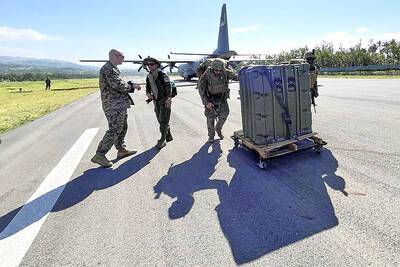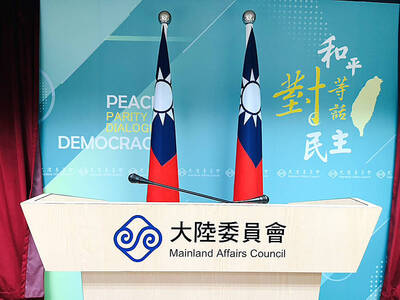President Ma Ying-jeou’s (馬英九) vision to create a “golden decade” has come under sharp criticism from Democratic Progressive Party (DPP) lawmakers after it was revealed that the government had outsourced Taiwan’s development plans to an economic research institute.
The Liberty Times (the Taipei Times’ sister newspaper) reported yesterday that the Council of Economic Planning and Development, which is responsible for planning the economic policies behind Ma’s “golden decade” pledge, launched a public tender for a research proposal on a “2020 National Development Vision plan.”
The Chung-Hua Institution for Economic Research reportedly won the NT$8 million (US$247,000) contract, which council officials said involved working with the council to hold public meetings nationwide promoting the “golden decade” policy.
DPP caucus whip Chai Trong-rong (蔡同榮) blasted the plan yesterday, saying it was “ridiculous” for the government to outsource an important article of national policy.
“It seems like Ma’s plan is to first have a slogan and then find the content,” DPP Legislator Huang Wei-cher (黃偉哲) said. “It damages the credibility of both the president and the government.”
Meanwhile, DPP Legislator Chen Ting-fei (陳亭妃) said that if the government was already outsourcing plans for Taiwan’s future, “President Ma might as well step down and ask the head of the Chung-Hua Institution for Economic Research to become president.”
According to the Liberty Times article, council officials have downplayed the affair, saying the council retained overall control over the “golden decade” plan.
The “golden decade” was first raised during April’s debate on an economic cooperation framework agreement with DPP Chairperson Tsai Ing-wen (蔡英文).

Three batches of banana sauce imported from the Philippines were intercepted at the border after they were found to contain the banned industrial dye Orange G, the Food and Drug Administration (FDA) said yesterday. From today through Sept. 2 next year, all seasoning sauces from the Philippines are to be subject to the FDA’s strictest border inspection, meaning 100 percent testing for illegal dyes before entry is allowed, it said in a statement. Orange G is an industrial coloring agent that is not permitted for food use in Taiwan or internationally, said Cheng Wei-chih (鄭維智), head of the FDA’s Northern Center for

LOOKING NORTH: The base would enhance the military’s awareness of activities in the Bashi Channel, which China Coast Guard ships have been frequenting, an expert said The Philippine Navy on Thursday last week inaugurated a forward operating base in the country’s northern most province of Batanes, which at 185km from Taiwan would be strategically important in a military conflict in the Taiwan Strait. The Philippine Daily Inquirer quoted Northern Luzon Command Commander Lieutenant General Fernyl Buca as saying that the base in Mahatao would bolster the country’s northern defenses and response capabilities. The base is also a response to the “irregular presence this month of armed” of China Coast Guard vessels frequenting the Bashi Channel in the Luzon Strait just south of Taiwan, the paper reported, citing a

UNDER PRESSURE: The report cited numerous events that have happened this year to show increased coercion from China, such as military drills and legal threats The Chinese Communist Party (CCP) aims to reinforce its “one China” principle and the idea that Taiwan belongs to the People’s Republic of China by hosting celebratory events this year for the 80th anniversary of the end of World War II, the “retrocession” of Taiwan and the establishment of the UN, the Mainland Affairs Council (MAC) said in its latest report to the Legislative Yuan. Taking advantage of the significant anniversaries, Chinese officials are attempting to assert China’s sovereignty over Taiwan through interviews with international news media and cross-strait exchange events, the report said. Beijing intends to reinforce its “one China” principle

A total lunar eclipse, an astronomical event often referred to as a “blood moon,” would be visible to sky watchers in Taiwan starting just before midnight on Sunday night, the Taipei Astronomical Museum said. The phenomenon is also called “blood moon” due to the reddish-orange hue it takes on as the Earth passes directly between the sun and the moon, completely blocking direct sunlight from reaching the lunar surface. The only light is refracted by the Earth’s atmosphere, and its red wavelengths are bent toward the moon, illuminating it in a dramatic crimson light. Describing the event as the most important astronomical phenomenon